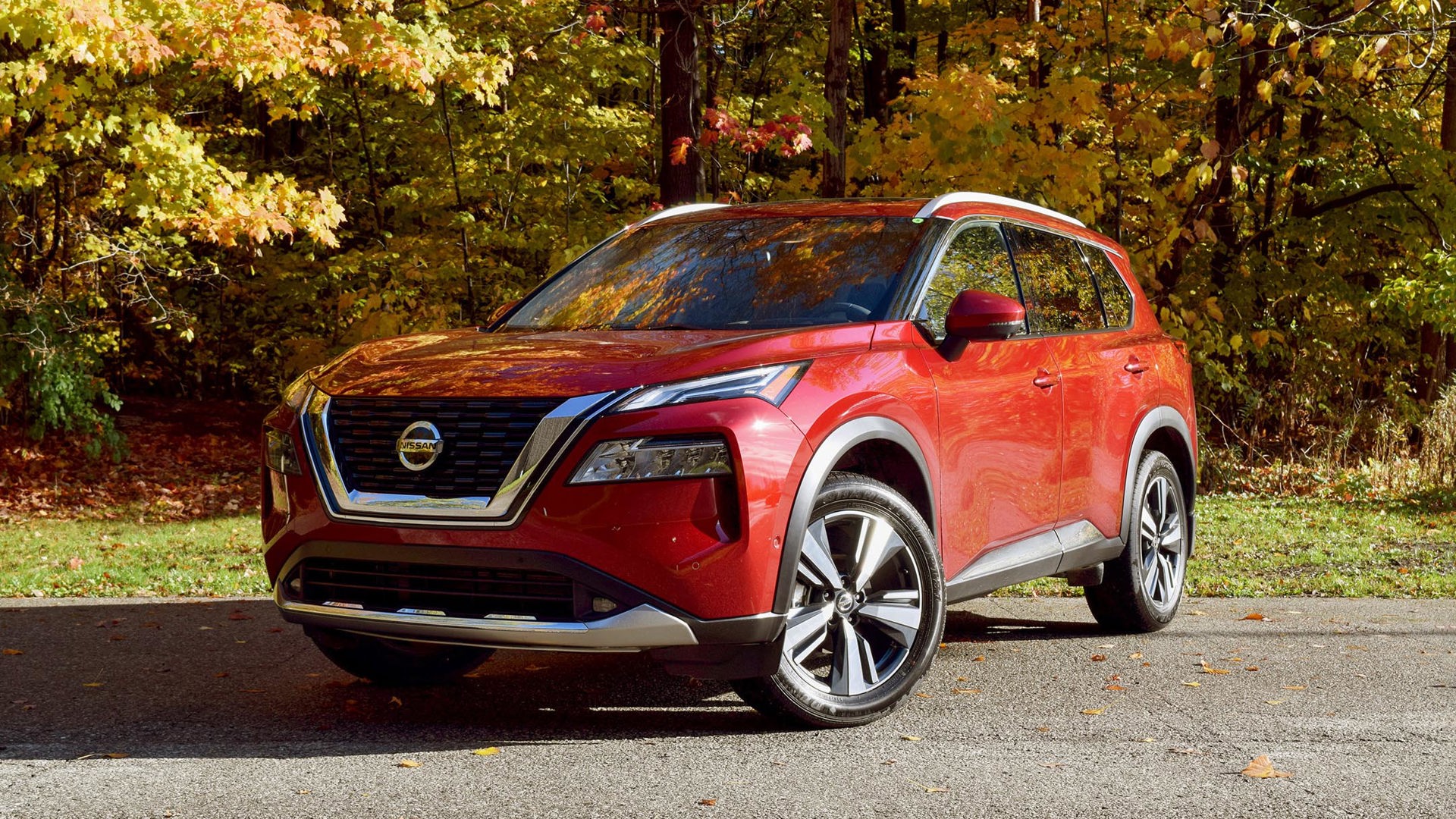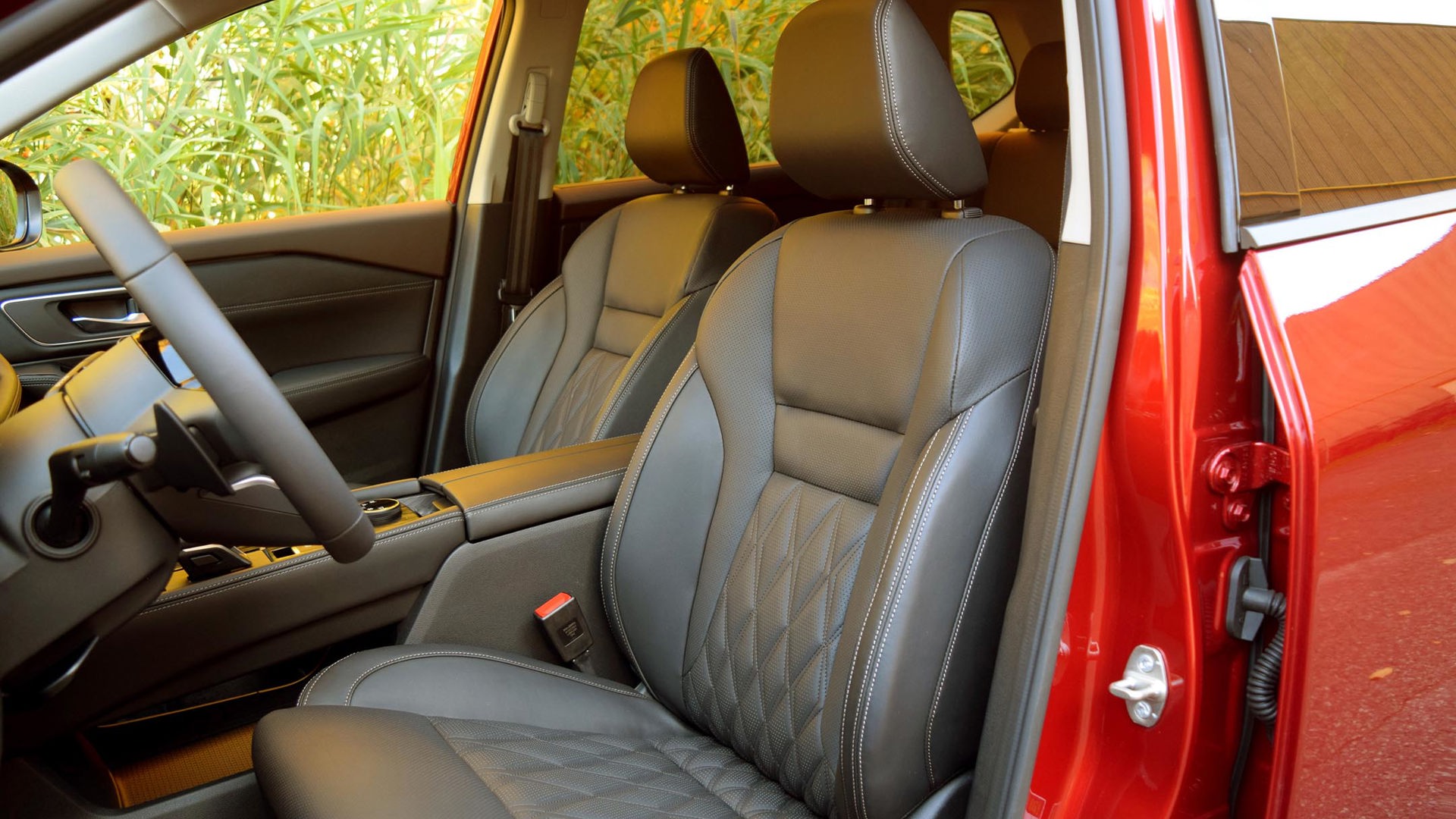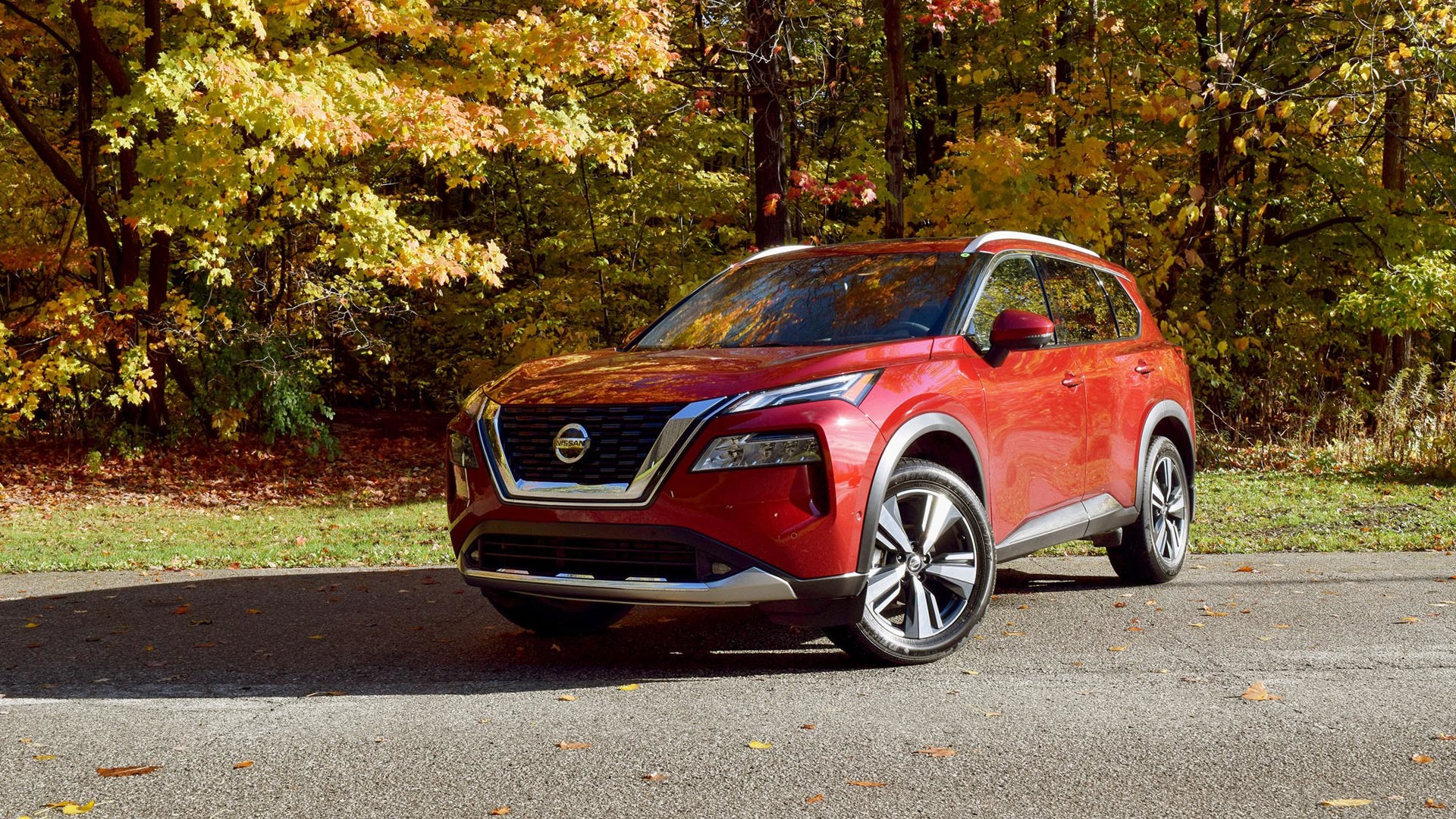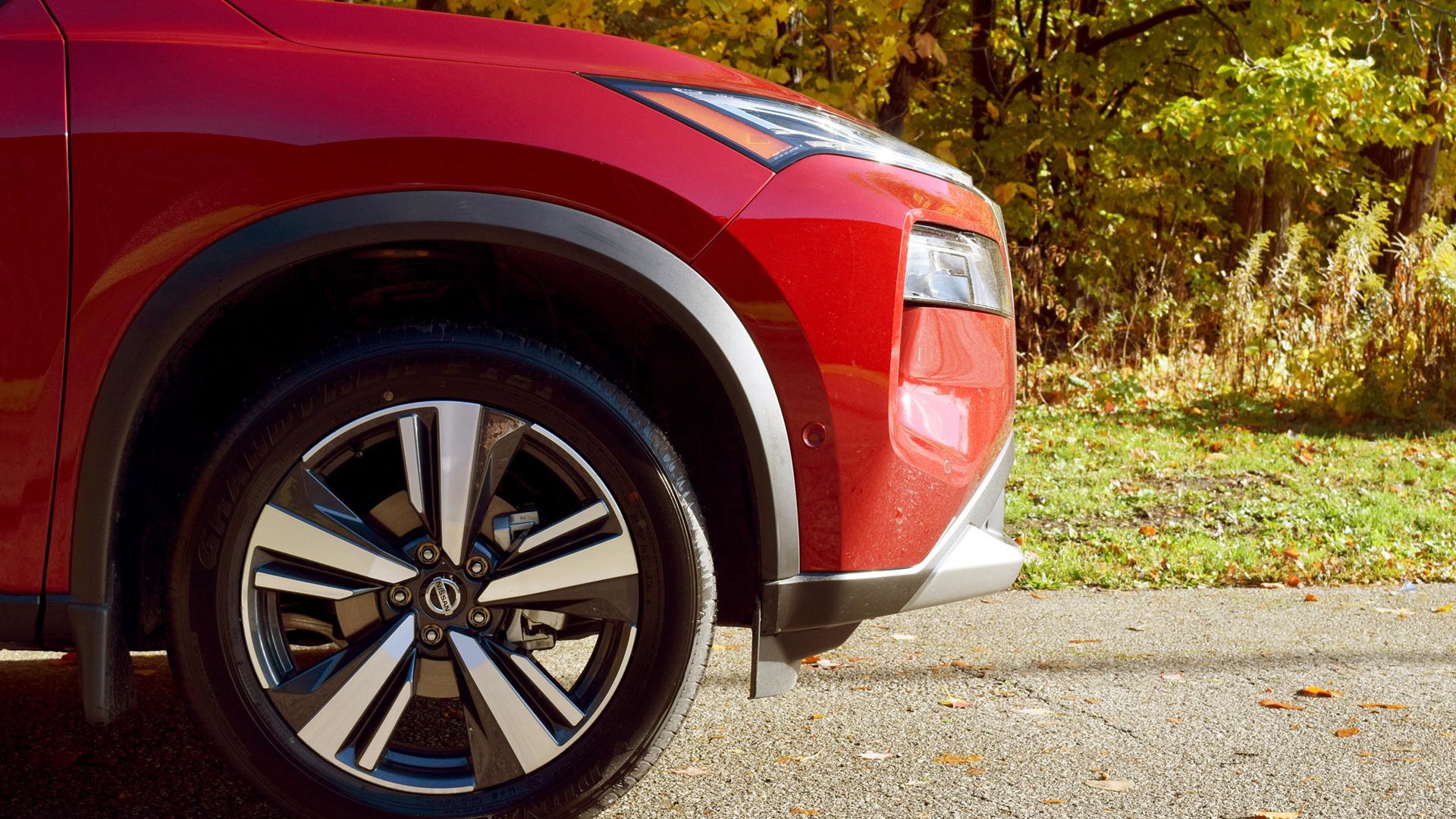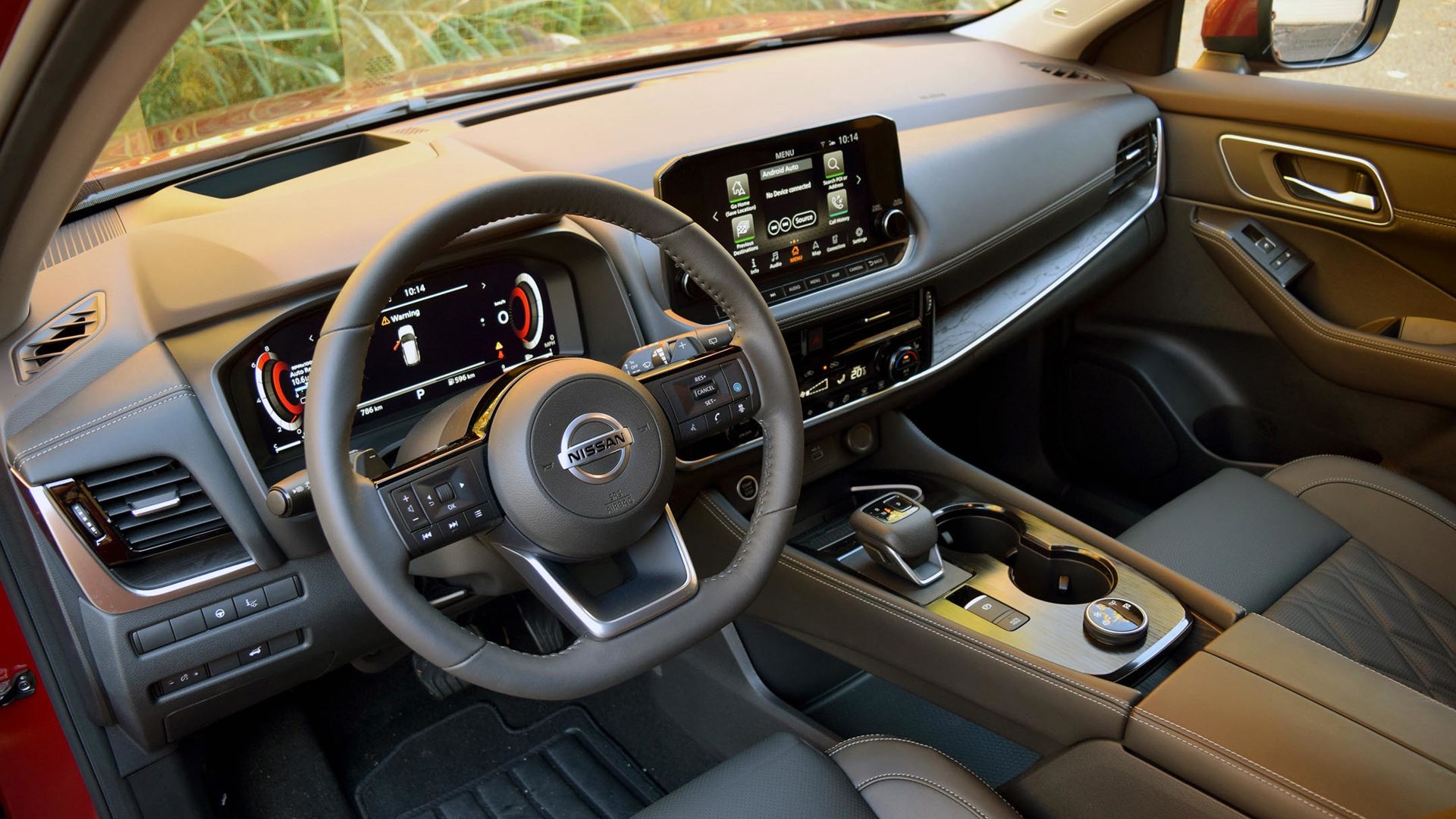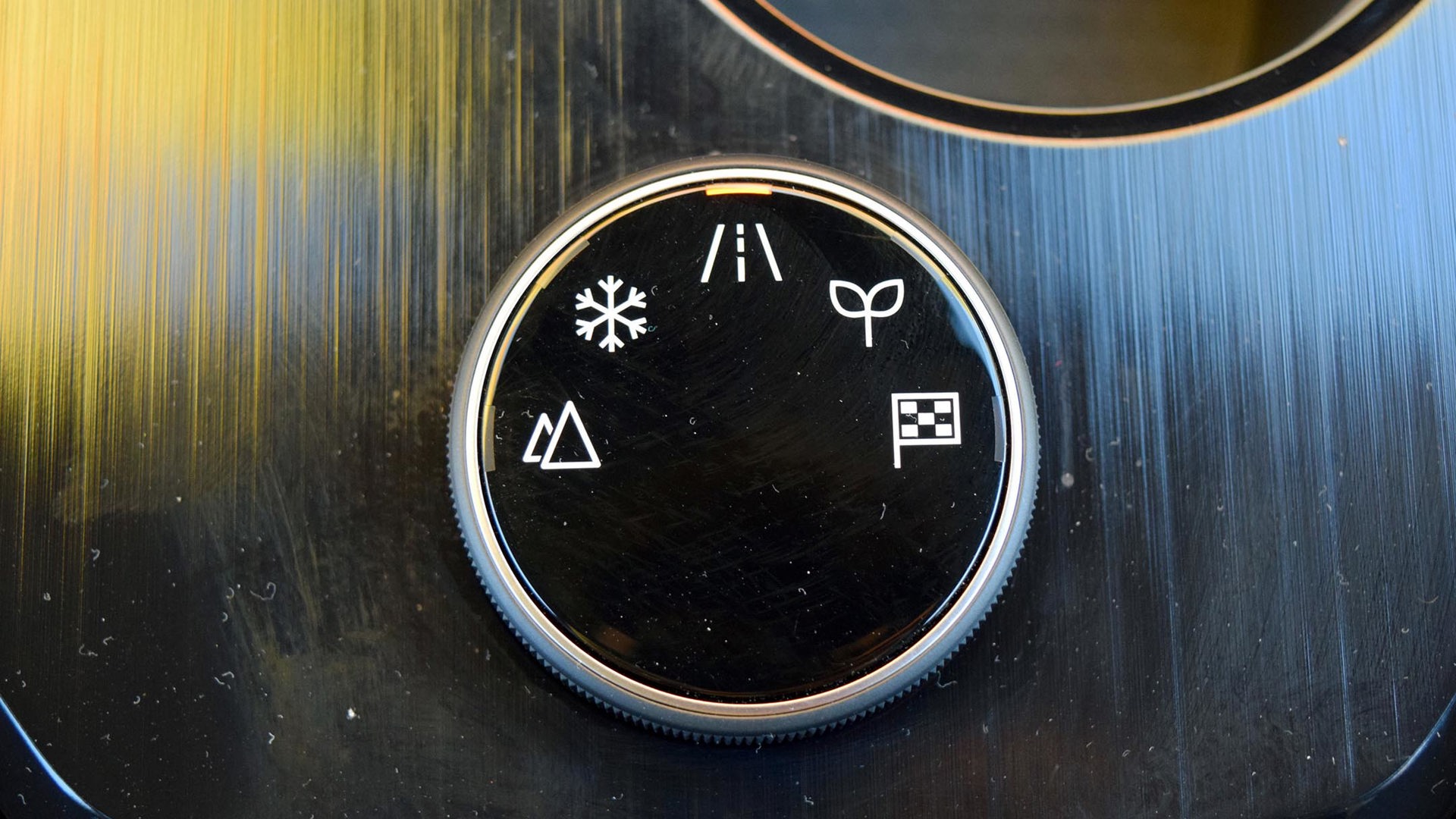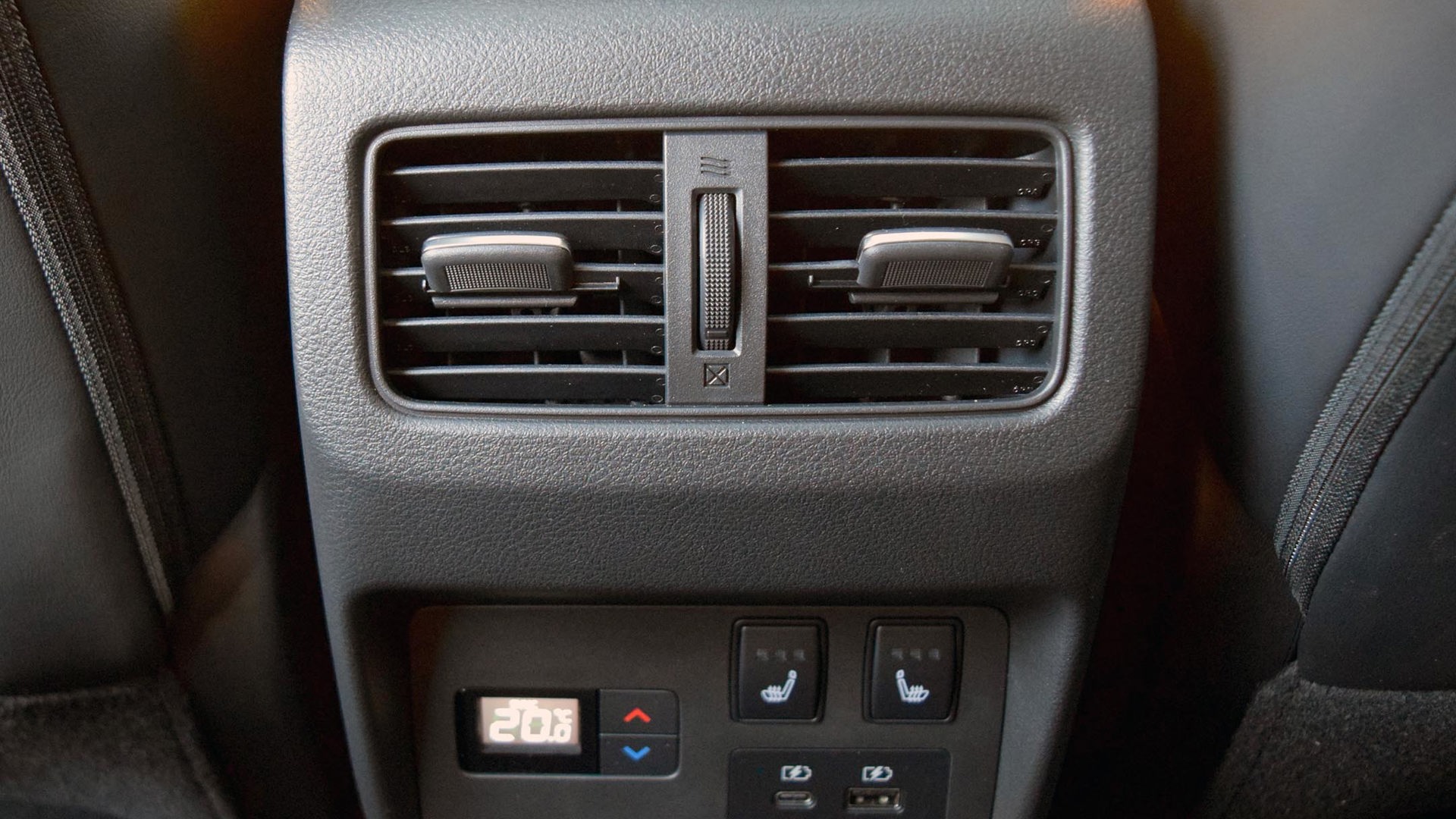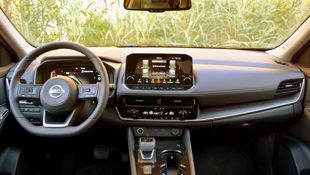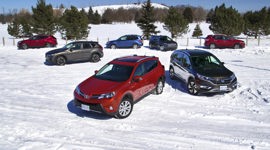Nissan is firing on all cylinders, and the 2021 Rogue is a perfect example of just what the automaker is capable of.
Rather than simply build a bigger and more powerful vehicle with a flashy infotainment system – the traditional redesign route – the automaker gave its best-selling product a serious rethink. With improved packaging and smarter technology, the new Rogue outshines plenty of rivals that have been hogging the spotlight over the past few years.
Smaller Package Despite Big Redesign
The styling takes some getting used to, as the Rogue uses some of the design language found on the rest of Nissan’s crossovers and applies it a bit haphazardly to this boxy body. It can look like a puffed-up subcompact Kicks from some angles, and there are a slew of lighting elements that pull your attention to the front end.
Even though the new Rogue is shorter and lower than the outgoing model, the design language is effective at making this version look large, and that lends itself to some practical benefits as well. The cargo opening is wider, while the tailgate swings high, reducing the risk of bumping your head while loading items into the back.
While the cargo volume improves by just one litre – to a total of 1,113 L behind the rear seats – the total space with the rear seats folded down has grown to 2,098 L, an increase of 116 L over its predecessor.
Huge Steps Inside
Nissan has over-delivered with the interior design. Platinum models channel the high-quality Nissan Murano and Maxima with quilted leather upholstery, a stitched dashboard, and tons of screens throughout the cabin. Further inspired by the Murano, all seats in the Rogue are now using the automaker’s so-called “zero-gravity” design, which provides both support and comfort on long drives.
Parents have reason to fall in love with the Rogue, thanks to the extra-wide door openings (swinging up to 85 degrees) for loading children, as well as available rear sunshades, and a built-in Wi-Fi hotspot.
These additions lead the Rogue to feel a class above some of its top rivals. The Honda CR-V, Toyota RAV4, and Subaru Forester are officially on notice, although there is room for improvement. In particular, the button layout on the steering wheel is a bit underwhelming and basic, while other controls, including the electronic gear selector, jiggle and slide around.
Tech, Gear, Gizmos, and Gadgets
Nissan has loaded the new Rogue with plenty of gadgets. Top-trim models get more than 30 inches of screen real estate split between three areas: a nine-inch touchscreen infotainment system, which supports Android Auto and Apple CarPlay, the latter without cables; a remarkable 12.3-inch digital dashboard, which is overloaded with information; and a 10-inch head-up display (HUD) that feels almost spartan in comparison. Cheaper versions lose the digital dash and HUD but get a seven-inch driver information screen and an eight-inch infotainment system.
Nissan also loads the cabin with other appreciated features including three-zone climate control, rear sunshades, a wireless phone charger, and USB-A and USB-C charging ports. There are heated seats available throughout the cabin, and a heated steering wheel, a by-product of the winter-weather testing and development Nissan conducts in Timmins, Ont. However, Nissan skipped ventilated seats, which are an invaluable feature on those leather seats in sunny conditions.
Improved ProPILOT Assist
The wonders of the cabin extend to the safety and driver assistance features. The standard safety suite includes high-beam assist, lane-departure warning, rear cross-traffic alert, rear automatic braking, blind-spot monitoring, and front automatic emergency braking with pedestrian detection. Add in the full LED lighting, parking sensors, and rear seat reminder, and the Rogue is loaded with safety equipment.
One of the highlights of the Nissan portfolio is the ProPILOT Assist system, the branded advanced cruise control system that helps drivers through some monotonous driving conditions. The automaker polled 6,100 drivers of the outgoing model and took their feedback seriously when upgrading the system in the new generation, according to Nissan Canada. As a result, the vehicle gets a next-gen radar system and front-facing camera, as well as revised tuning of the steering assistance feature. These changes lead to a smoother application of the system, especially when it comes to braking and addressing oncoming curves. Platinum models, meanwhile, use GPS and route guidance information to improve the overall experience of the system by automatically adjusting the vehicle’s speed based on the speed limit or curves in the road ahead.
On the road, these systems feel surefooted and confident, with a gentle tone to indicate that the system is fully operational. Whenever it can’t see a lane marking or the vehicle in front properly, it lets you know without a panic alarm.
Refined Road Manners, But Nothing Over the Top
Hit your usual commute and the 2021 Rogue feels more refined and buttoned-down than its predecessor. Don’t expect a radical, sporty or twitchy driving experience; the Rogue is limp in comparison to the Mazda CX-5 or Ford Escape, both of which are fast, stiff, and responsive.
Instead, the Rogue rides comfortably and quietly. This is noticeable over rocky roads or those routes with cracked pavements and tons of potholes. The automaker explained that it worked to manage the rear motion of the vehicle, and the efforts show. A quick and light steering feel helps the vehicle feel a bit more responsive, but the overall experience is sedate and refined.
The Rogue doesn’t quite feel ready to get anywhere in a hurry, however. Under the hood is a 2.5L four-cylinder engine that makes 181 hp and 181 lb-ft of torque. This is slightly more than the Subaru Forester and roughly on par with the base 1.5L turbo in the Ford Escape, but some rivals make more horsepower in their base motors while offering upgraded engines as well.
The motor is paired to a continuously variable transmission (CVT) that’s more responsive than before, but this doesn’t do much to improve the overall excitement factor when driving. It manages the engine properly; the only time it was buzzy was when pushed hard to make a pass. All-wheel drive is optional on base S and SV models, which are front-wheel drive out of the gate. Platinum models get standard all-wheel drive. A few drive modes are offered to help the system feel more confident on different road surfaces or driving conditions.
Is It All Worth It?
One glance at the $28,498 starting price for the front-wheel-drive Rogue S, and you may conclude that the new compact crossover is far from a bargain. However, the amount of standard features in this model is far beyond the outgoing model. Items like heated seats and steering wheel, the improved advanced safety system, push-button start, full LED lighting, and that eight-inch infotainment system are all included in this model, while all-wheel drive is an extra $2,300.
The next step up is the SV model, which starts at $31,998 and also drives the front wheels alone (all-wheel drive pushes the price to $34,298). This gets the impressive ProPILOT Assist system, as well as a remote engine starter, panoramic sunroof, 18-inch wheels, and improved parking cameras. All-wheel-drive models are also offered with the $2,200 Premium package, which includes heated rear seats, rear sunshades, a power tailgate, and leather upholstery.
Finally, the Platinum trim is only offered with all-wheel drive and comes with everything offered on the Rogue. There are no optional extras, but this model does carry a $39,998 price tag. All models are also subject to a $1,830 freight charge. Considering the top-grade RAV4 is priced at more than $40,000, the Rogue seems like a solid choice for those trying to save a few bucks without sacrificing equipment.
Final Thoughts
The 2021 Nissan Rogue has the potential to appeal to a far greater audience than before. The improved interior, available tech features, and refined driving experience mean it’s way more multidimensional than the last model. Nissan didn’t have to go this far with the new model, as the last-generation model was the brand’s best-selling model, but going the extra mile resulted in a stand-out product in a tough segment.
